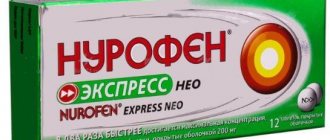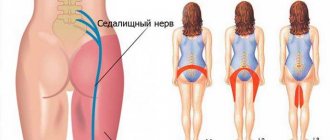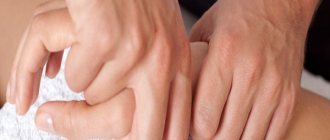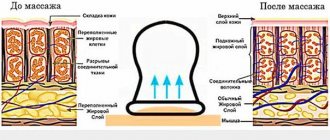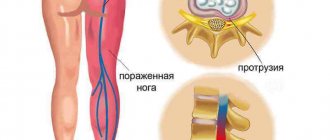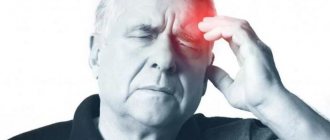There are traditionally many calls with complaints that the sciatic nerve has caught a cold during the cold season. But things are not always exactly as patients assume. They think that severe pain and limited mobility are the result of exposure to negative temperatures. Actually this is not true.
The sciatic nerve is the thickest in the human body. It is formed by several branches of the lumbar radicular nerves. It leaves the lumbosacral nerve plexus and goes to the entrance to the tunnel formed by the piriformis muscle. Not only the sciatic nerve passes inside it, but also large blood vessels. As you understand, this structure perfectly protects the nerve fiber from hypothermia even in severe frost.
In order to freeze the sciatic nerve, frostbite of the piriformis muscle must occur. Although there are exceptions. The small section along which the sciatic nerve follows from the exit from the lumbosacral nerve plexus to the entrance to the piriformis muscle does not have the same reliable thermal insulation. But again, in order to catch a cold, you need to be in the cold for several hours without clothes, excuse me, with a bare tailbone.
Therefore, it is necessary to understand that a cold sciatic nerve is most often a complication of another, long-term disease. For example, degenerative dystrophic destruction of intervertebral discs or deformation of the iliosacral joint of bones. Also, a similar clinical picture can be caused by plexitis, intervertebral hernia, instability of the position of vertebral bodies, spondyloarthrosis, changes in posture and a number of other serious pathologies of the spinal column and surrounding tissues.
In this article we will look at questions about what to do if the sciatic nerve is cold, what symptoms may occur and what treatment should be carried out to completely restore this part of the autonomic nervous system.
If you have pain along the sciatic nerve and you are in Moscow, then make a free appointment with a neurologist at our manual therapy clinic right now. An experienced doctor will conduct a full examination, make an accurate diagnosis and tell you how to properly carry out complex treatment. You will receive individual recommendations that will help you undergo examination and cope with the disease.
Causes of sciatica
The sciatic nerve originates in the spinal cord and continues to the phalanges of the toes. In the knee area it bifurcates: one part is responsible for the innervation of the lower leg, and the other for the foot. This structure also provides sensitivity to the muscles of the lower extremities. It regulates the connection of the tissues of the listed areas with the central nervous system.
What can cause a person to get a cold in the sciatic nerve? Symptoms of the problem appear after a long stay in a draft, in cold water or due to hypothermia of the entire body. The inflammatory process can also be caused by infringement of this structure. A similar situation occurs with degenerative lesions of the spine.
Among the main causes of inflammation are the following:
- hypothermia of the body;
- infectious diseases (tuberculosis, herpes zoster, influenza, etc.);
- spinal injuries;
- osteophytes;
- diabetes;
- gout;
- heavy metal intoxication;
- spinal canal stenosis.
A sedentary lifestyle, predominantly sedentary work, and heavy lifting can contribute to the development of inflammation.
Possible reasons
Inflammation (sciatica) of the sciatic nerve can be provoked by:
- hypothermia of the body;
- pinching (hernias, tumors);
- thrombosis;
- increased physical activity;
- infections, viral diseases;
- diseases of the nervous system (due to the patient’s age);
- diabetes;
- incorrect structure of the spinal column (presence of bone processes, spines), injuries;
- pregnancy;
- osteochondrosis in the lumbar region;
- piriformis syndrome (characterized by pulling and aching pain in the buttocks involving the hip and sacroiliac joints, all pelvic muscles).
Additional risk factors are:
- excess weight;
- low physical activity;
- physical work associated with lifting weights.
Types of sciatica:
- primary (caused by infections, viruses);
- secondary (associated with lesions of nearby structures).
Clinical picture
If a person has a cold of the sciatic nerve, the symptoms of the pathology appear gradually. First they manifest themselves in the form of discomfort in the lower back, tension in the legs. As the disease progresses, they are supplemented by shooting, sharp pain while walking and bending. This is the most common sign of a pinched sciatic nerve. The pain radiates down the leg in some patients even at night when trying to roll over again. During physical activity, discomfort increases. The person gets tired quite quickly and complains of general malaise. His appetite worsens and restrictions in his movements appear. There may be a decrease in the sensitivity of tissues at the site of the lesion, which is accompanied by a feeling of “pins and needles” and numbness.
As a rule, inflammation appears on one side. Bilateral lesions are rare, and each movement is performed with great effort. Spasm of the gluteal muscles is observed.
Neglecting treatment and ignoring symptoms can lead to serious consequences:
- muscle tissue atrophy;
- lack of reflexes in the lower extremities;
- problems with urination and bowel movements.
When it becomes impossible to relieve pain in the leg while walking on their own, patients seek medical help.
Treatment of inflammation of the sciatic nerve
Sciatica is not an independent disease, but develops against the background of symptoms of concomitant pathologies. Therefore, treatment is primarily aimed at eliminating the causes of the disease.
To relieve acute pain in a patient who has a cold in the back and sciatic nerve, nonsteroidal anti-inflammatory drugs (Diclofenac, Ketanov, Ibuprofen, Indomethacin) and muscle relaxants are prescribed. Externally, the affected area is treated with warming ointments containing anesthetics: Prednisolone, Hydrocartisone.
If painkillers do not help, a novocaine blockade is performed. The patient is prescribed bed rest and restrictions on physical activity to reduce injury to inflamed nerve endings. You need to sleep on a hard surface with a pillow under your knees.
After acute symptoms are relieved, massage, exercise therapy, reflexology, and physiotherapeutic procedures are performed.
Therapeutic exercise promotes muscle relaxation, stimulates metabolic processes in the affected area, eliminates swelling and pain.
Physiotherapeutic treatment methods for sciatic neuralgia include:
- UHF;
- phonophoresis;
- magnetic therapy;
- acupuncture;
- dynamic currents;
- ionization with novocaine and potassium iodide;
- paraffin applications;
- electrophoresis.
Epidural steroid injections are administered into the space between the lining of the spinal cord and the periosteum of the vertebrae. In this case, the medicine acts directly at the site of nerve damage. Therapy allows you to relieve severe pain and reduce the negative impact of medications on the digestive system.
Treatment should be carried out comprehensively: medications, physiotherapy, vitamin therapy, pain relief. The patient may need to consult a neurologist, neurosurgeon, rheumatologist, vertebrologist, or vascular surgeon.
Diagnostic methods
If you suspect inflammation, you should consult a neurologist. Diagnosis of the disease begins with the study of complaints and the results of various tests:
- Sicard's sign. When bending the foot, pain occurs.
- Lasègue's symptom. In the supine position, extension of the lower limb is accompanied by discomfort in the thigh muscles.
- Landing symptom. Pain in the lower back, aggravated by sitting and straightening the knee.
To clarify the cause of inflammation, the patient is prescribed radiography in several projections, CT and MRI. Additionally, a general analysis and blood biochemistry are prescribed to identify indirect signs of intoxication and an autoimmune reaction.
Carrying out pharmacotherapy
Doctors use about 5 types of drug treatment aimed at eliminating inflammation. If the patient was able to catch a cold in the sciatic nerve and consult a doctor in a timely manner, then the pain syndrome will be relieved quickly. This prevents tissue abscess. Drug treatment includes taking the following medications:
- Antidepressants are medications of plant and synthetic origin that normalize sleep. Taken in combination to treat an illness.
- Nonsteroids are anti-inflammatory drugs without side effects.
- Steroids are antiphlogistic drugs. They are used as epidural injections. The solution acts on inflammation locally. Therefore, the pain is eliminated quickly.
- Local analgesics are anti-inflammatory and decongestant liniments that prevent tissue abscesses by promoting nerve decompression.
With the help of an integrated approach, the symptoms of the disease are quickly alleviated and inflammation is eliminated. Therapy is carried out with the help of Ceberex, Sulindac, Diclac. Ceberex is a nonsteroidal analgesic with antipyretic effects. Used for symptomatic therapy. The nonsteroid Voltaren inhibits the synthesis of prostaglandins, eliminating inflammation in tissues.
With the help of the anti-inflammatory drug Sulindac, cyclooxygenases are inhibited and the synthesis of prostaglandins is prevented. The antiphlogistic and analgesic drug Airtal has a direct effect on the pathogenesis of hyperthermia and the inflammatory process. This reduces the severity of pain and eliminates stiffness when moving.
Benfolipen is a multivitamin that regenerates damaged areas of the sciatic nerve. Taking it increases the conductivity of impulses and strengthens the immune system. Diklak gel has an anti-inflammatory effect. It inhibits the metabolism of arachidonic acid. Against the background of such therapy, the amount of prostaglandins decreases, which helps to quickly eliminate swelling and tissue inflammation.
First aid
Many people only guess about the causes and symptoms of sciatica until inflammation occurs. A pinched nerve occurs suddenly and is almost impossible to predict. In such a situation, a person needs emergency help:
- He must be placed on his stomach. It is better to choose a hard and flat surface (for example, the floor). A sagging bed can only make the situation worse. You should place a cushion or small pillow under your chest.
- The lower back must be freed from clothing. Apply any anti-inflammatory ointment to the inflamed area. Every home medicine cabinet contains Diclofenac, Nimesulide or Ibuprofen.
- After the pain has been relieved, the person should be turned onto his back and a pillow should be placed under the lower back.
Heating pads, warming compresses or rubbing cannot be used for sciatica. At the initial stage, this can aggravate the course of inflammation and worsen the patient’s condition.
Use of medications
Treatment begins with non-steroidal anti-inflammatory drugs to stop inflammation and relieve pain. For sciatica, Ketonal, Nise and Ibuprofen are usually prescribed. First, the drugs are used in the form of intramuscular injections. Then they switch to tablets and supplement them with external agents. Ointments based on capsicum (Capsicam) have a good effect.
To relieve muscle spasms, muscle relaxants (Sirdalud, Mydocalm) are used. In a hospital setting, patients are given novocaine blockades to block nerve impulses that provoke pain attacks. B vitamins are also useful. For back pain, they work as analgesics. Belonging to the category of neurotropes, they have a positive effect on the functions of nerve cells.
The most popular drug for the treatment of inflammation of the sciatic nerve is Diclofenac. The product is available in the form of injections, tablets or ointments. Its action is directed:
- to relieve inflammation and pain;
- relieving muscle spasm;
- reduction of swelling;
- restoration of the musculoskeletal system.
The fastest way to relieve a patient from the symptoms of sciatica is injections. Their help is sought at the beginning of therapy. Then they switch to tablets or ointment.
This remedy has proven itself as an analgesic, but has many contraindications. It should be used with caution by people with heart, kidney, liver, and gastrointestinal diseases. This is evidenced by the instructions for use of Diclofenac ointment. The price of the drug varies depending on the form of release. For example, for a package of tablets you will have to pay about 50 rubles, and a tube of ointment costs about 200 rubles.
Physiotherapy and massage
In addition to the course of medications, physiotherapy is prescribed. Their action is aimed at restoring metabolism in the affected area, improving blood circulation and stimulating muscle fixation. The following procedures are considered the most effective:
- traction;
- phonophoresis;
- magnetic therapy;
- electrophoresis;
- paraffin therapy.
It is better to do the procedures in courses of 7 sessions, then take a break. If necessary, the treatment is repeated or a different method of exposure is chosen.
Massage for sciatica improves lymph flow and blood supply. Contraindications to its use include purulent tissue damage, skin diseases, and spinal injuries. There are several types of massage for the inflammatory process:
- Relaxing. Prescribed during periods of exacerbation.
- Medicinal. They do it for the purpose of prevention.
- Vacuum. It is performed using special cans.
- Spot. The impact is carried out at acupuncture points. Performed with fingertips.
Massage should only be performed by a qualified specialist.
Principles of treatment
If symptoms appear that the sciatic nerve is cold, treatment is carried out using not one remedy, but a combination of them. For effectiveness, a combination of drug therapy, physiotherapy, massage, and physical therapy is practiced. If there is no result from these measures, as well as in severe cases of damage and the impossibility of stopping the tissue abscess, surgical intervention is resorted to.
Drug therapy
Medicines for the treatment of sciatica are designed to:
- eliminate pain;
- stop the inflammatory process;
- make up for the lack of substances that improve health and accelerate recovery.
Surgical intervention
When traditional treatment methods fail, leg pain when walking and other symptoms persist for more than 8 weeks, surgery is performed. The choice of a specific type of intervention depends on the root cause of the pathology.
When inflammation is caused by a herniated disc, microdiscectomy is prescribed. This is a minimally invasive intervention that is performed using a special microscope. The surgeon’s task is to remove the hernia without damaging healthy bone structures.
If the pathology is associated with trauma or narrowing of the spinal canal, laminectomy is recommended. With its help, it is possible to relieve compression of the roots and sciatic nerve. During the operation, the doctor makes an incision and moves away the muscles and fatty tissue. Then a part of the vertebral arch is excised. For decompression, it is necessary to additionally remove the formation compressing the root.
Anatomy, causes
The sciatic nerve exits the pelvic cavity through the pyriform opening.
To understand how the nerve is irritated, it is necessary to briefly dwell on its anatomy.
The sciatic nerve is part of the sacral plexus and exits the pelvic cavity in most cases through the pyriform opening. Passing through the gluteal muscles, the nerve is directed to the back of the thigh, where it is covered by the biceps femoris and adductor muscles of the thigh. In the popliteal fossa, the nerve divides into the tibial and peroneal nerves.
Sciatica neuralgia, or sciatica, can occur when any part of the nerve fiber is damaged, but more often occurs when the nerve is compressed by a spasmed piriformis muscle or its ligament (piriformis syndrome). Muscle spasm occurs against the background of degenerative processes in the spine (osteochondrosis, herniated intervertebral discs, disc protrusion, etc.). Another cause of sciatica is damage to the spinal roots or reflex muscle spasm due to pathology in the spine. The spinal roots are compressed by herniated intervertebral discs, most often at the level of the 5th lumbar vertebra (L5) or 1st sacral (S1).
General treatment recommendations
During the course of therapy and after its completion, the patient is recommended to:
- maintain bed rest during exacerbation of pathology;
- It is forbidden to lift weights or play sports;
- swimming is allowed if the water temperature is more than 20 degrees;
- You should not stay in one position for a long time;
- It's better to give up alcohol.
If a person has already caught a cold on the sciatic nerve, it is important to pay attention to the symptoms and begin treatment immediately. Prevention of relapses comes down to strengthening the back muscles, monitoring posture, and an active lifestyle.
Source


